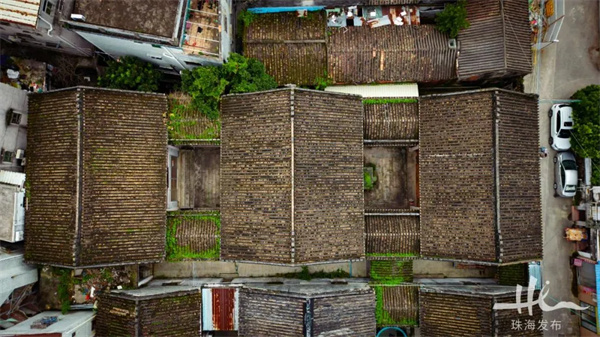Namping village, formerly known as Shawei village, saw its beginnings during the Southern Song Dynasty's (1127-1279) Jiading period when people migrated there to settle, making a living through farming and fishing, gradually giving rise to the village we see today.
Within the crisscrossing streets and lanes lie numerous ancestral halls and temples, embodying the tranquil and natural essence of an ancient village.
Built in the tenth year of the Qing Dynasty's (1644-1911) Tongzhi reign, Kang Zhenjun Temple stands as a testament to the village's historical vicissitudes. Kang, originally Kang Baoyi, hailed from Luoyang, Henan province, and served as a general in the Northern Song Dynasty (960-1127). Villagers revere Kang as the guardian deity of the people and the village, hence the construction of this temple for worship.
Over 20 years ago, famous movie star Stephen Chow brought the cast of Shaolin Soccer to film scenes in front of Kang Zhenjun Temple.
Moving past Kang Zhenjun Temple and navigating through winding alleys, one arrives at Zhao Liurong Ancestral Hall, built during the Guangxu period of the Qing Dynasty. Spanning over 1,500 square meters, the hall embodies the typical architecture of the Lingnan region. It stands as a significant physical relic for studying the cultural heritage of ancestral halls in Zhuhai and the historical development of the Rong family.

An aerial view of the Zhao Liurong Ancestral Hall. [Photo/WeChat account: zhxiangzhou]
Proceeding through the narrow alley beside Zhao Liurong Ancestral Hall, the Namping Watchtower comes into view. Standing five stories high and nearly 14 meters tall, this watchtower serves as the sole surviving defensive structure in Namping, offering insights into the safety and defense systems of Namping village during the Republican era (1911-1949).
Copyright © Xiangzhou District, Zhuhai City.
All rights reserved. Presented by China Daily.
Copyright © Xiangzhou District, Zhuhai City.
All rights reserved. Presented by China Daily.